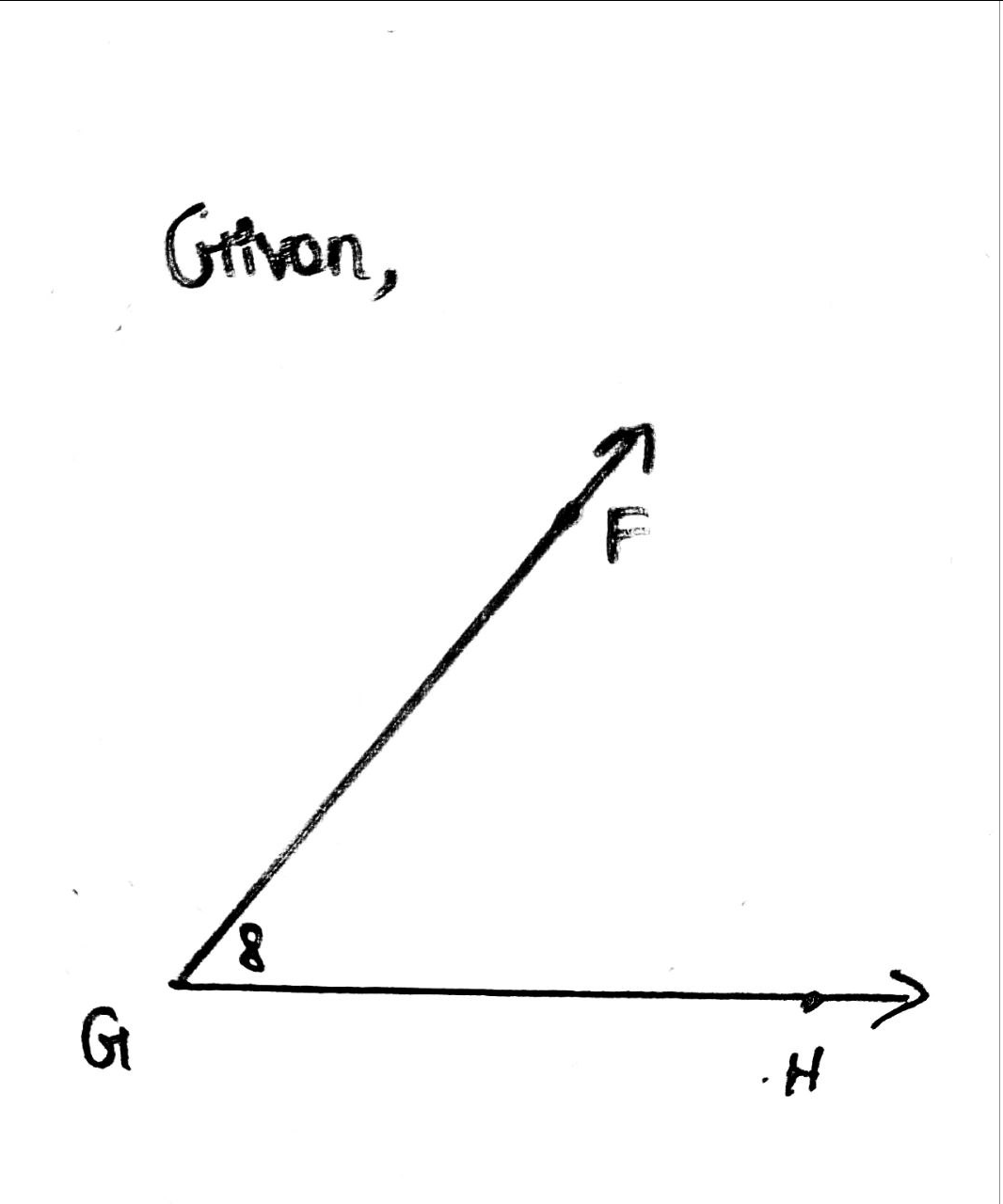Elementary Geometry For College Students, 7e
7th Edition
ISBN:9781337614085
Author:Alexander, Daniel C.; Koeberlein, Geralyn M.
Publisher:Alexander, Daniel C.; Koeberlein, Geralyn M.
ChapterP: Preliminary Concepts
SectionP.CT: Test
Problem 1CT
Related questions
Question

#### Diagram Explanation
The diagram consists of three points labeled F, G, and H, forming an angle at point G. Here, GF and GH are rays meeting at G, forming an angle. The line segment GH has a length of 8 units and is horizontal. The ray GF extends upwards from point G, creating the angle of interest.
#### Task
Identify and name the angle using four different notations:
1) Angle: _______
2) Angle: _______
3) Angle: _______
4) Angle: _______
These tasks help in recognizing that angles can be named based on different points or sides involved in their creation, using vertex and rays notation.
### Key Concepts
- **Vertex Notation:** The angle can be named by using the vertex point, often denoted by the middle letter when using three points (e.g., ∠FGH, ∠HGF).
- **Single Letter Notation:** If it doesn't cause confusion, single letter notation may also be used (e.g., ∠G).
- **By Rays:** You can name the angle by the rays that form the angle (e.g., ∠GFH, using letters for the rays originating and ending).
Understanding these conventions is essential for accurately describing angles in geometric figures.](/v2/_next/image?url=https%3A%2F%2Fcontent.bartleby.com%2Fqna-images%2Fquestion%2F1a79dcac-a3cb-4e2b-a227-03982a48fb50%2Fa2a3191e-d8a2-4eb8-93de-b3d0636fe96a%2Fcvsypzd_processed.png&w=3840&q=75)
Transcribed Image Text:### Understanding Angles through Diagram Analysis
#### Directions
For the following diagram, name the angle in four different ways.

#### Diagram Explanation
The diagram consists of three points labeled F, G, and H, forming an angle at point G. Here, GF and GH are rays meeting at G, forming an angle. The line segment GH has a length of 8 units and is horizontal. The ray GF extends upwards from point G, creating the angle of interest.
#### Task
Identify and name the angle using four different notations:
1) Angle: _______
2) Angle: _______
3) Angle: _______
4) Angle: _______
These tasks help in recognizing that angles can be named based on different points or sides involved in their creation, using vertex and rays notation.
### Key Concepts
- **Vertex Notation:** The angle can be named by using the vertex point, often denoted by the middle letter when using three points (e.g., ∠FGH, ∠HGF).
- **Single Letter Notation:** If it doesn't cause confusion, single letter notation may also be used (e.g., ∠G).
- **By Rays:** You can name the angle by the rays that form the angle (e.g., ∠GFH, using letters for the rays originating and ending).
Understanding these conventions is essential for accurately describing angles in geometric figures.
Expert Solution
Step 1

Step by step
Solved in 2 steps with 2 images

Recommended textbooks for you

Elementary Geometry For College Students, 7e
Geometry
ISBN:
9781337614085
Author:
Alexander, Daniel C.; Koeberlein, Geralyn M.
Publisher:
Cengage,

Elementary Geometry for College Students
Geometry
ISBN:
9781285195698
Author:
Daniel C. Alexander, Geralyn M. Koeberlein
Publisher:
Cengage Learning

Elementary Geometry For College Students, 7e
Geometry
ISBN:
9781337614085
Author:
Alexander, Daniel C.; Koeberlein, Geralyn M.
Publisher:
Cengage,

Elementary Geometry for College Students
Geometry
ISBN:
9781285195698
Author:
Daniel C. Alexander, Geralyn M. Koeberlein
Publisher:
Cengage Learning